The article “Amesha Spentas” written by Shapour Suren-Pahlav was published in the CAIS (The Circle of Ancient Iranian Studies) venue. Kindly note that (a) the text printed further below has been edited from the original CAIS report and (b) all other images and accompanying captions printed below do not appear in the original CAIS report. For more on the mythology and cultures of ancient Iran see:
====================================================================================
Amesha Spenta (Aməša Spənta) is an Avestan language term for a class of divinity/divine concepts in Zoroastrianism, and literally means “Holy/Bounteous Immortals” (Pahlavi meshāspand and [A]mahrāspand; New Persian amshāspandān).
Etymology
Although the expression does not occur in the Gathas:
“… it was probably coined by the Zoroaster himself. Spenta is a characteristic word of his revelation, meaning ‘furthering, strengthening, bounteous, [and] holy’. ” (Boyce, Mary (1983), “Aməša Spənta”, Encyclopedia Iranica, vol. 1, New York: Routledge & Kegan Paul; pp. 933-936).
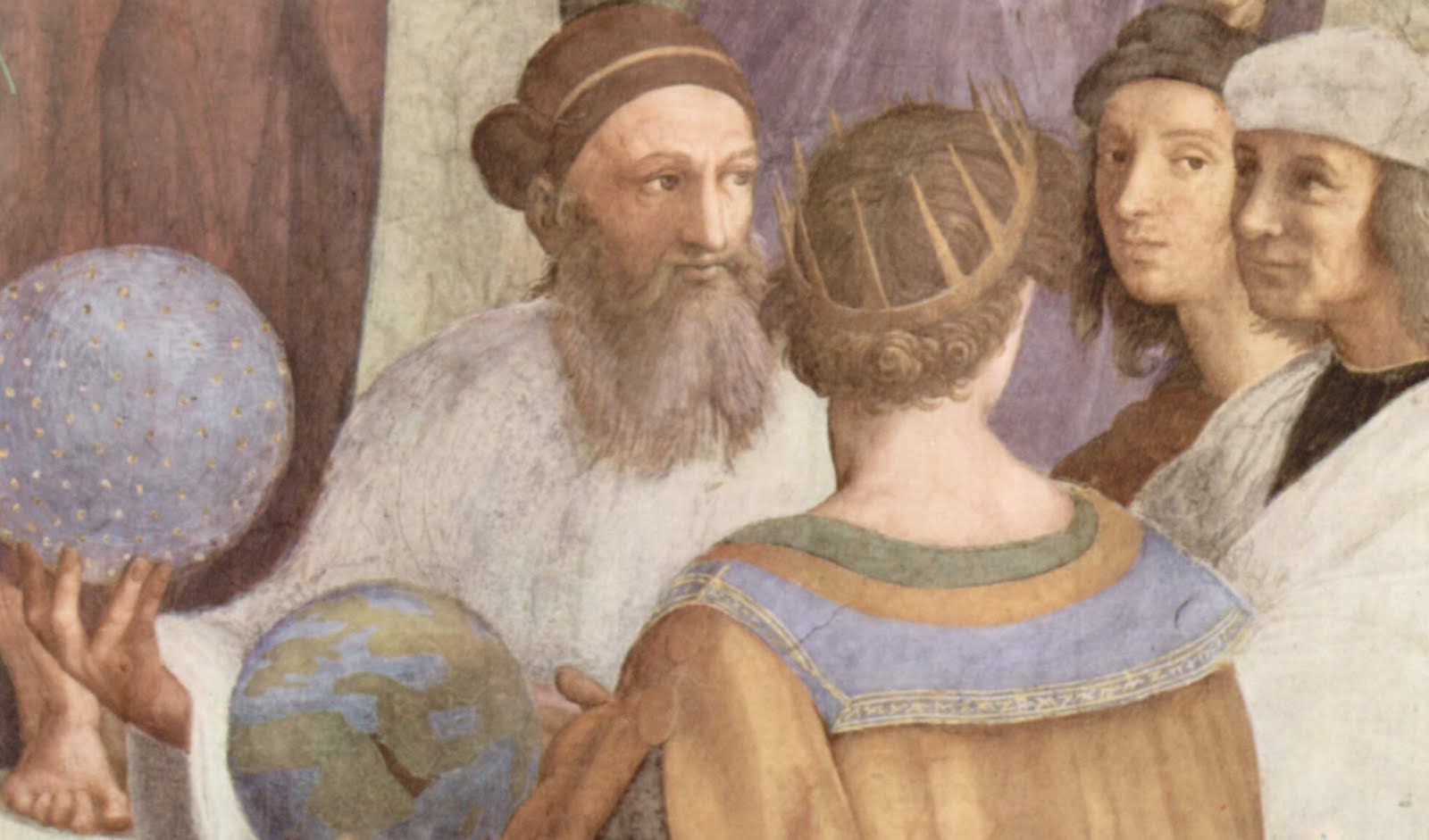
A detail of the painting “School of Athens” by Raphael 1509 CE (Source: Zoroastrian Astrology Blogspot). Raphael has provided his artistic impression of Zoroaster (with beard-holding a celestial sphere) conversing with Ptolemy (c. 90-168 CE) (with his back to viewer) and holding a sphere of the earth. Note that contrary to Samuel Huntington’s “Clash of Civilizations” paradigm, the “East” represented by Zoroaster, is in dialogue with the “West”, represented by Ptolemy. Prior to the rise of Eurocentricism in the 19th century (especially after the 1850s), ancient Persia was viewed positively by the Europeans.
The oldest attested use of the term is in Yasna 39.3, which is part of the Yasna Haptanghaiti and in which the two elements of the name occur in reverse order, that is, as Spenta Amesha. Like all other verses of the Yasna Haptanghaiti, Yasna 39.3 is also in Gathic Avestan and is approximately as old as the hymns attributed to Prophet Zoroaster himself.
Concept
The Amesha Spentas are the abstract concepts and the essences of which the good religion of Zarathushtra constructed. The Amesha Spentas are aspects of Ahura Mazda, through which he is known. Ahura Mazda establishes the independent existence of the Amesha Spentas in the ideal realm of Being. Sometimes they are personalized and venerated as such in the Gathas.
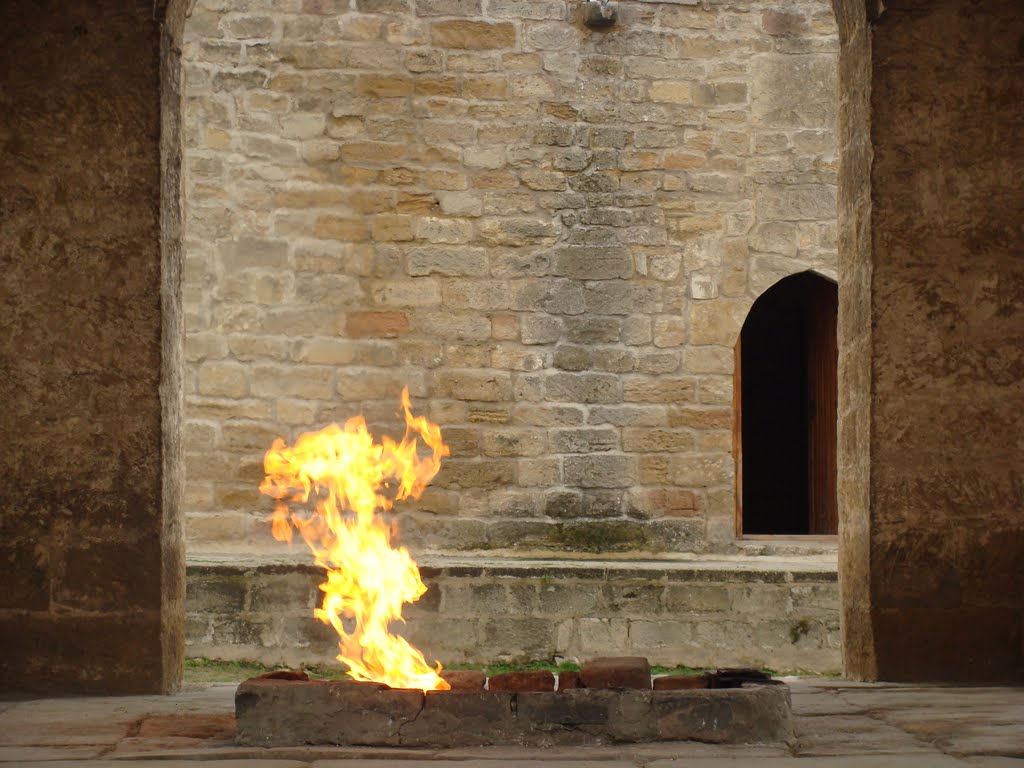
The main fire altar at the Atash-kade (Zoroastrian Fire-Temple) of Baku in the Republic of Azerbaijan (known as Arran and the Khanates until 1918) (Picture Source: Panoramio). This site is now registered with UNESCO as a world heritage site.
Sometimes Ahura Mazda is characterized as their father. Some of the essences we can incorporate in our own lives, e.g. the Good-Mind, and Piety or Benevolence. Others are to be viewed as ideals, which may be actualised in concrete existence by the actions of right-thinking humans. Here we should note that the distinction between an ideal realm of existence, and a physical realm of existence is made in the Gathas.
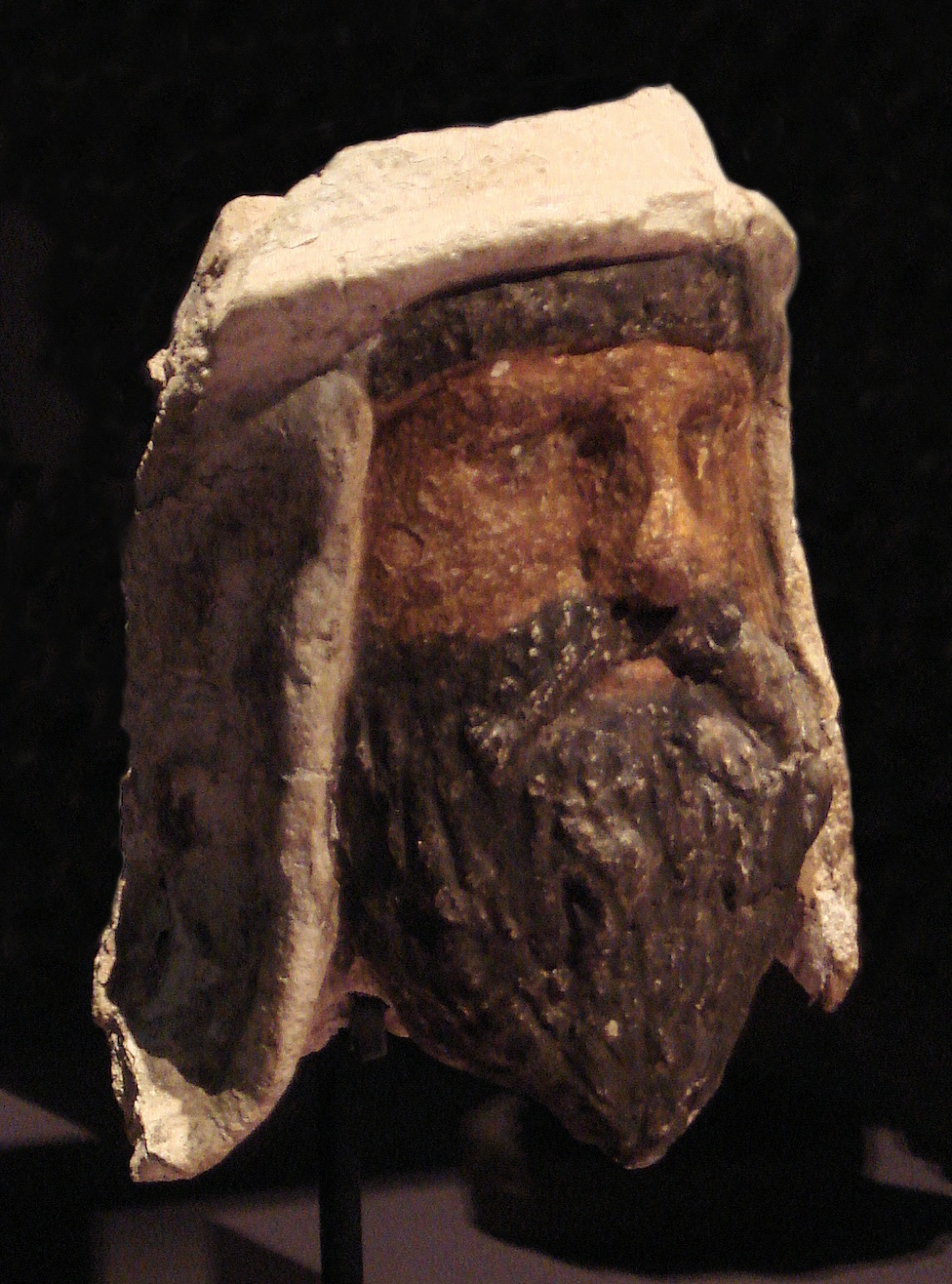
A 3rd-2nd century BCE bust of a painted head (of alabaster) of a Bactrian ruler (or satrap) from the Oxus Temple, located at Takht-i-Sangin, Tajikestan (Source: ALFGRN in Public Domain).
There are One Hundred and Seven aspects of the Lord Mazda. The six Amesha Spentas, along with Sraosha (NP: Soroush) are the duties of beings in this material world, and as every single Zoroastrian should follow them. The submission or Sraosha to Lord Mazda. Sraosha is the concept of Hearing, i.e. receiving a divine message. Since what is heard is a communication from the Divinity, the concept also implies acceptance of the Creator, and obedience.
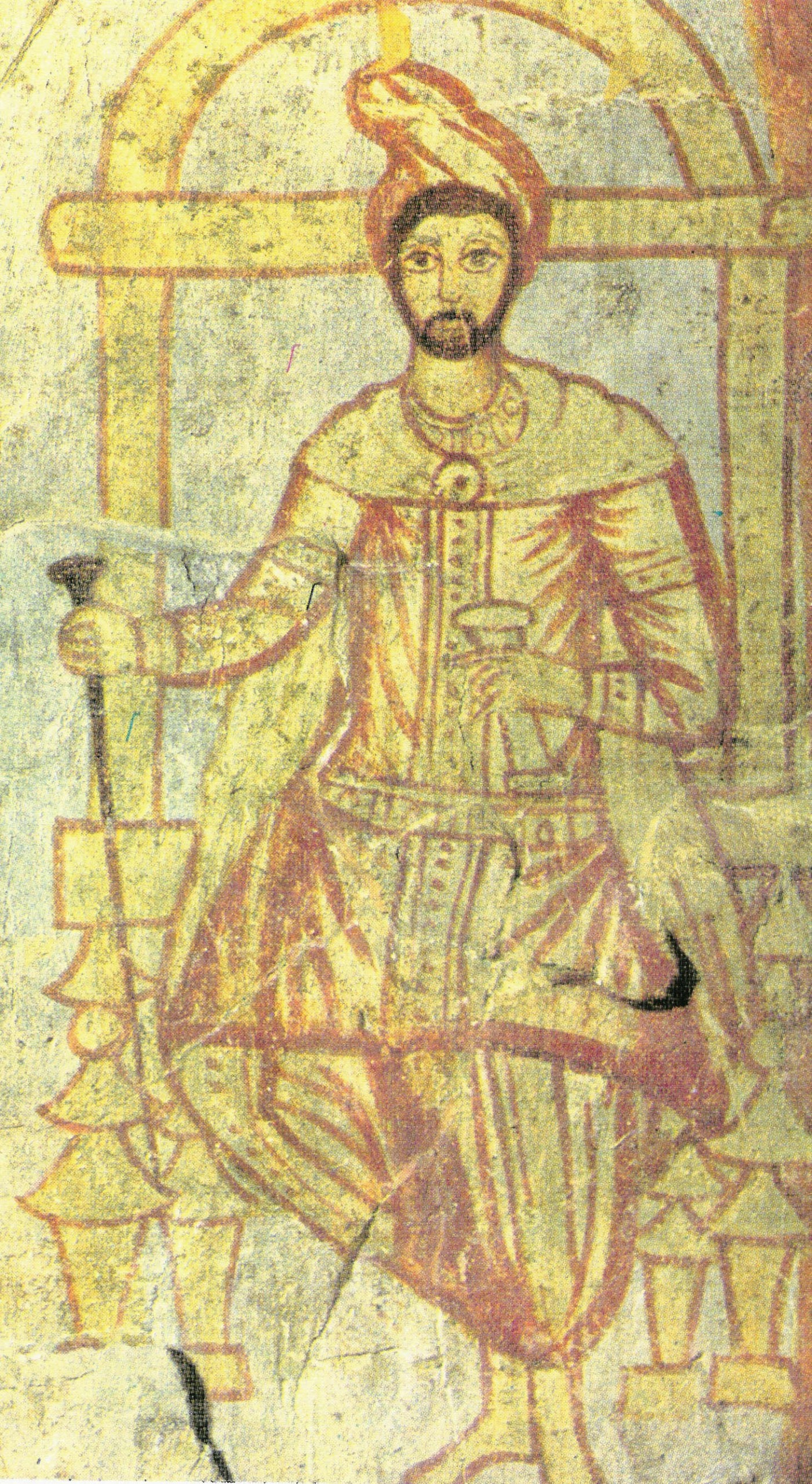
A drawing of Zoroaster that was made by a Manichean initiate at Dura Europus (Source: Clioamuse); for more on the creed of Mani, see here…
The six Amesha Spentas are the following:
1. Asha Vahishta (New Persian: Ordibehesht): The Highest (Best) Truth, also the Highest form of Righteousness. This Truth describes how the World ought to be in its ideal form. Consequently, the intention to actualise it is Righteous Intention, and action according to it the highest form of Righteousness.
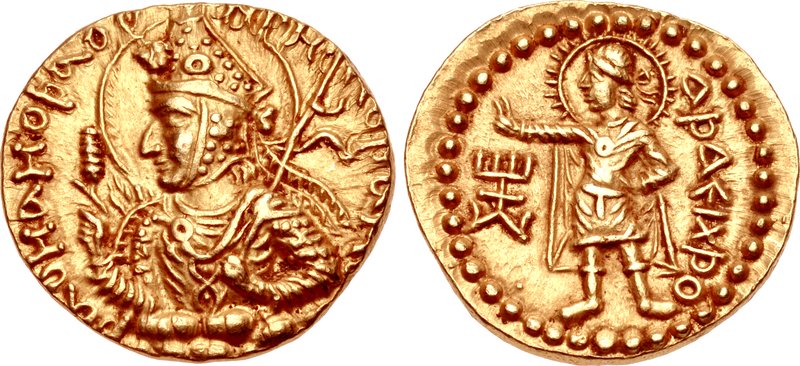
A coin of Kushan king Huvishka (left) with an image of Asha Vahishta (Right) (Source: CNG Coins in Public Domain).
2. Vohu-Mana (NP: Bahman): The Good-Mind. The mental capacity to comprehend Asha, to understand the nature of our actual world, and recognise the resulting disparity between the ideal and the real. It is thus the instrument of moral cognition.
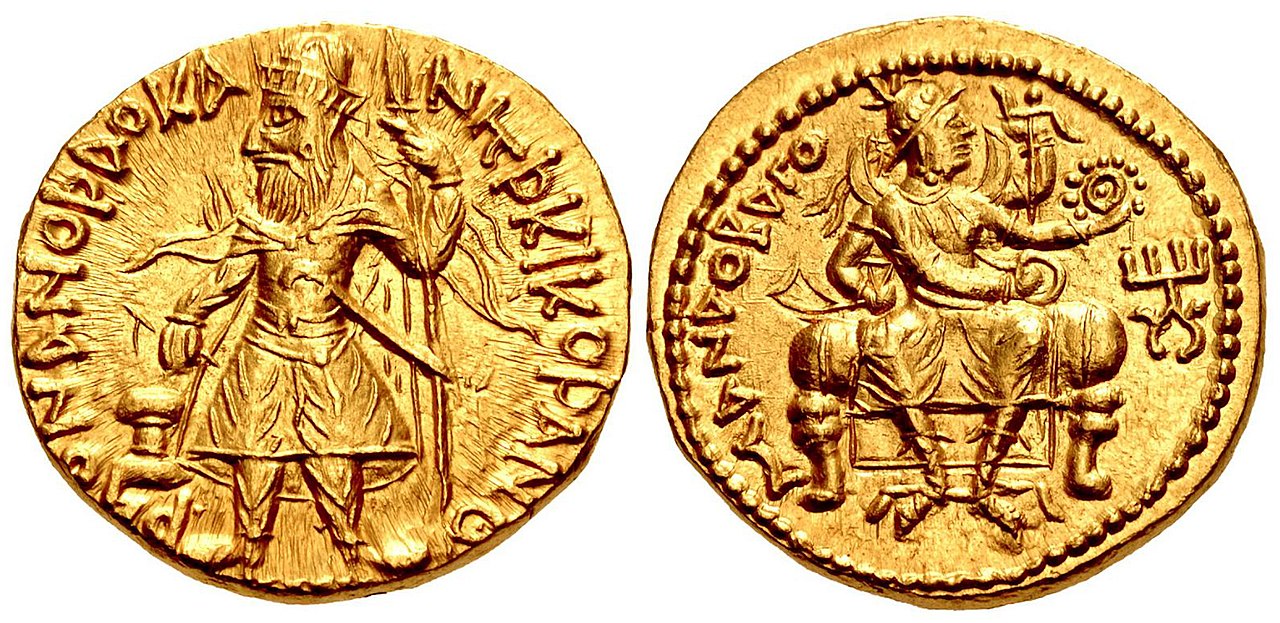 A coin of Kushan king Kanishka I (left) with an image of Manobago [Zoroastrian: Vohu-Mana] (Right) (Source: CNG Coins in Public Domain).
A coin of Kushan king Kanishka I (left) with an image of Manobago [Zoroastrian: Vohu-Mana] (Right) (Source: CNG Coins in Public Domain).
3. Spenta Armaity (NP: Esand / Esfand-Armadh): The Holy Attitude. Theologically, it is the attitude of Piety toward the Source of Being and the Ultimate Truth; Ethically, it is the attitude of Benevolence, a concern for the Good. It characterised as Right-Mindedness.
4. Khshathra-Vairya (NP: Sahrivar): The Ideal Dominion. It is the ideal social (and political) structure of the human world. In human terms, we may call it the ideal society. In theological terms, it is the Kingdom of Heaven.
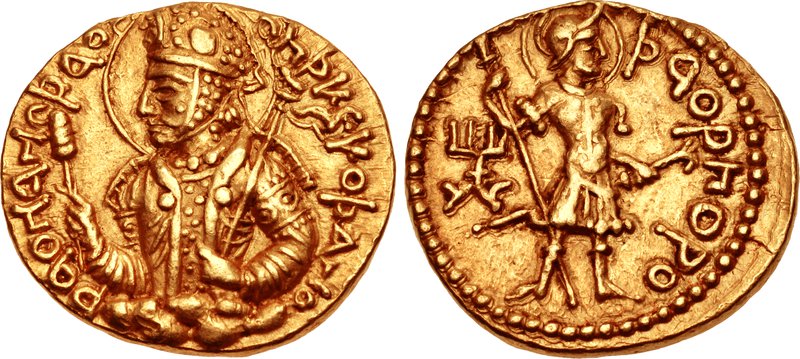
A coin of Kushan king Huvishka (left) with an image of Khshathra-Vairya (Right) (Source: CNG Coins in Public Domain).
5. Haurvatat (NP: Khordad): The state of complete Well-being, physical and spiritual integrity. In its full form it is a state of perfection on earth.
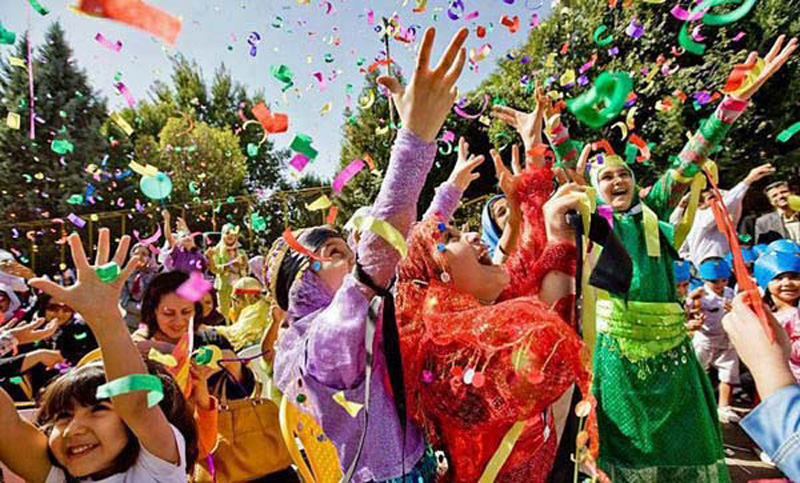
Undated photo of Khordadegan celebrations (Source: Kojaro).
6. Ameretat (NP: Amordad): The state of Immortal Bliss.
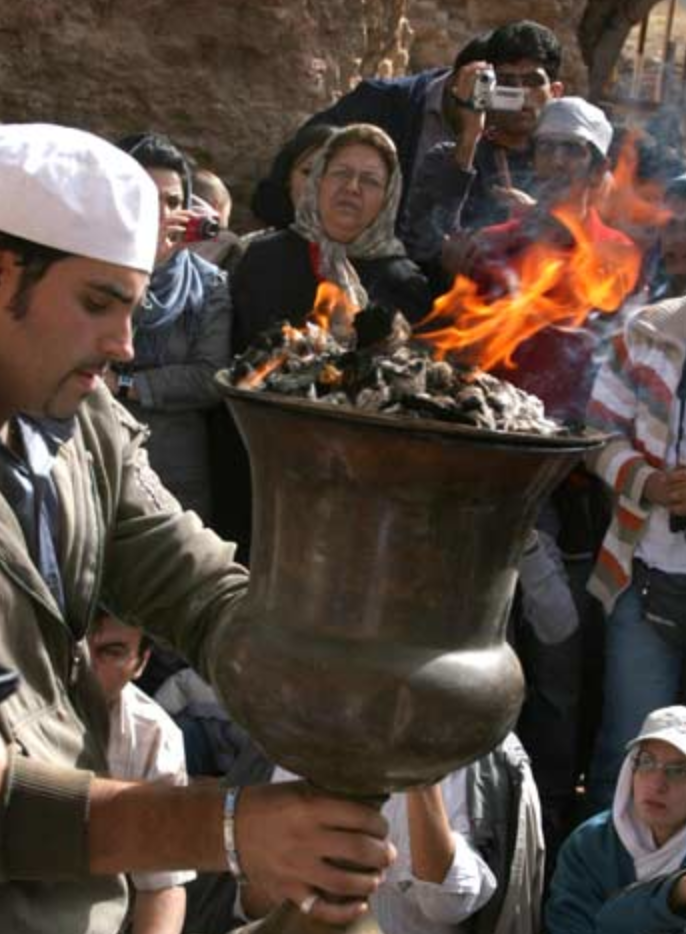
The Gahanbar ceremony at the ancient Ādur-Gushnasp (Azargoshasb) Fire-Temple in Iran’s Azarbaijan province. After the prayers are concluded, a “Damavaz” (a ceremony participants) holds aloft the censer containing fire and incense in his hand to pass around the congregation. As this is done, the Damavaz repeats the Avesta term “Hamazour” (translation: Let us unite in good deeds). Participants first move their hands over the fire and then over their faces: this symbolizes their ambition to unite in good works and the spread of righteousness (Photo Source: Sima Mehrazar). For more on this topic see … “Ādur-Gushnasp“.



